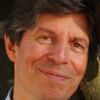Not unlike his music, Ludovico Einaudi's career has been unique and slowly building up in intensity. The Italian composer has straddled the world of classical and pop music for about 20 years, building a following outside the usual "star-making machinery" of the music business.
On his latest, Elements, Einaudi has created a suite of songs that surround his impressionistic piano with percussion and a range of instrumental colors - from electric guitar to cello.
In a recent interview during his US tour, the composer said the origins of the album came from a venture into playing with only piano and percussion.
"The first step was an interesting session of experimentation with different sounds; throwing ideas in a container, very freely, without having to consider anything but trying things, exploring sounds," he said.
He then began to explore a range of fields outside of music with an inchoate goal of finding the form in the chaos of the world around us. As he explored his own unified field theory, he read Kandinsky's writings on art, as well as about Euclidian geometry and biology; then slowly found musical elements to pull everything together.
"There was always the question of how the human being in the history of the world has been trying to understand the complexity of the world," he said, "to find an answer, to give an order to the chaos...this was the source of my inspiration."
"Sometimes the process was really chaotic," he continued. "Sometimes clear, sometimes not at all clear....I just enjoyed the freedom of starting things and exploring different textures and sounds," noting that at one point he incorporated the sound of a metal sheet played as it was submerged in a water tank. "It's a project that could continue for me forever."
With his piano at the sonic center, Elements moves from evocative scene to scene, sometimes building to intense crescendos, sometimes lying quiet and lovely.
His latest project (with close to 2 million views on YouTube) was one with the environmental group Greenpeace - a video of him playing his "Elegy for the Arctic" on a manmade float resembling a sheet of ice, with the goal of calling attention to climate change.
With his Larry David-ish encirclement of white hair and glasses, the 60-year-old Einaudi hardly looks like a rock star, yet he has built up an avid following in unlikely places over the years. With little commercial radio or television exposure, Einaudi has found listeners from soundtracks, commercials, Spotify playlists, pop star tweets as well as his albums. He has close to 700,000 followers on Spotify and 2.5 million monthly listeners there. His gently flowing, meditative songs have been passed around as soothing study aids by grad students as well as sampled by Nicki Minaj, so he regularly sells out shows filled with fans half or a third his age.
His evocative music has been tapped for Olympics commercials as well as for many soundtracks, including collaborations with Clint Eastwood and Darren Aronofsky.
"In a soundtrack, you are in a way always relating with...a combination of different languages," he said. "It has to have the same path and same rhythm. Sometimes it's a polyphony of languages that have to work together in some way."
"With musical projects alone," he said, "you can be more free. In a way, it is nice to create for yourself a structure, a frame that is not necessarily a cage."
Einaudi was born in Turin to a prominent Italian family. His grandfather was the president of Italy after World War II, and his father was the founder of a prestigious publishing company. Raised in rarified surroundings, he studied classical music, but also was in love with the rising experimental rock of the 1960s.
He said that his 1996 album Le Onde (BMG), based on the Virginia Wolff novel "The Waves," was the first where he felt he was able to capture the music that he was pursuing. He then began to experiment with adding sounds to his solo piano, even working with musicians from other cultures, such as Mali on Diario Mali.
Several years ago, Einaudi began to explore music that was both foreign and related to his own culture: taranta, the ancient ritual trance music from the southeastern Italian region of Salento. The result was a sprawling, border-crossing work called The Taranta Project, which featured players from the Italian band Canzoniere Grecanico Salentino, as well as Gambian ritti player Juldeh Camara, British guitarist Justin Adams and the Turkish ney player Mercan Dede.
"You can learn and enrich yourself through the process of knowing a different musical culture," he observed. "[Each collaboration] was a chance for me to understand different musical approaches and musical visions. With every musical project, I ended up feeling more enriched by the experience...You relate with your creativity with a world that is already full of dimensions and history and people who are keeping the traditions alive."
Get out some tissues to watch this one: Einaudi music from a touching (though corporate) 2012 Olympics ad directed by Oscar winner Alejandro González Iñárritu
Einaudi's Greenpeace collaboration "Elegy for the Arctic":
"Four Dimensions" from Einaudi's album Elements
The Taranta Project (with archival footage of taranta ceremonies)
